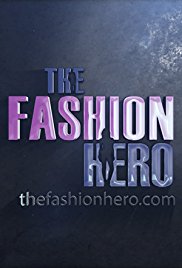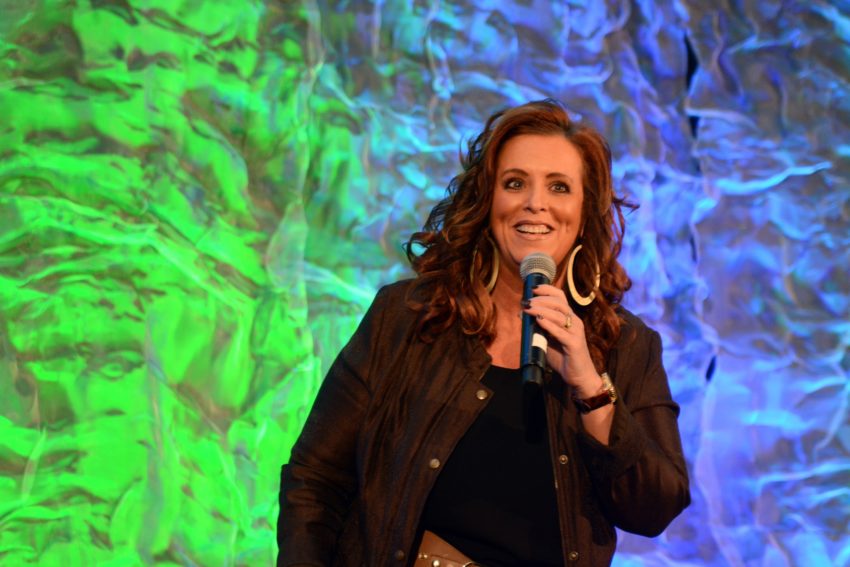Last updated on October 2nd, 2019 at 01:07 am
 How do you start a speech?
How do you start a speech?
Paid public speaking dreamers need to understand that the open and the close of your speech are the two most important moments of your presentation. Your opening statement and how you end your talk are the audience’s most remembered moments.
So today I’m going to talk about great speech openings.
First of all, I hope you have a good opening to your speech. I hope you have words to buffer the introduction by the host about you to the audience before you launch into your address and telling listeners what to do.
How you open a speech serves a critical purpose.
Before I talk about new great ways to begin your formal talk with an audience, let me first talk about WHY the way you open your speech is paramount to your success and what you need to accomplish with your opening.
The purpose of your speech opening is:
• You break up the room energy from what has occurred prior to you taking the mic.
If you deliver a speech during a luncheon or while an audience eats dinner, you will have to combat the hustle and bustle of wait staff and the sound of clinking silverware. There will be those times when you will follow a presenter who is incredibly dull and your crowd is now texting or half-asleep from sheer boredom. Or maybe you will be expected to speak just after music and dancing and you’re the quiet one who will step on to the stage following the din.
No matter what you follow, the truth remains: You are the energy buffer. You have to get the audience’s attention and change the energy in the room to what you need it to be for your great speech.
• The speech opening is your first real introduction to your audience. You are meeting the audience for the first time–so meet them!
Introduce yourself much in the same way you do whenever you meet someone new. Don’t you know what to talk about? Start with what most of the American public leads with at cocktail parties: “What’s your name?” “Where are you from?” “What do you do for a living?” Don’t assume that the introduction announcing you to the podium was your introduction. It wasn’t. Nobody in the audience was listening anyway.
Introductions are personal. Introduce yourself before you jump to tell the audience your story.
• You have to grab the listener’s attention and show them your speech will be worth their time.
Just like the first chapter of a book is intended to reel in the reader, so should your speech. If you think you have the audience’s attention because they have to sit in the room–you’re wrong. Lose your audience at the beginning of your speech and chances are good you won’t ever get them back.
Show the crowd that your speech is worth their undivided attention.
• Establish likeability right away.
You are a salesperson at the mic–selling something for the public to believe or learn. People buy from people they like, trust, believe, and feel like they know. Establish a personal connection before you tell the assemblage what you’ve been hired to say.
Get to know your crowd before you convince your crowd.
• Tell people why you’re there and what they will learn today.
The audience may know what you do is in the event program, but they won’t read it. Show the audience where your speech is going, and they’ll be happy to follow.
• Illustrate the problem that the audience has that you are there to fix.
Get the crowd to agree they have a problem before you teach them how to fix it. Don’t tell them what you think they need to know. Shine a light on a problem or desire they have and show them how you can help them fix it or get it.
Speak to their pain or desire right away up front.
• Show the audience you’re happy to speak to the group, and what you have in common.
Commonality creates a connection and relaxes the audience. Every trusting relationship is guided by a commonality of purpose.
I know. Wow. That’s a lot to accomplish, isn’t it? And, sadly, many paid public speakers don’t do any of the above and they wonder why they aren’t booked more often. Now, for the good part of this story. I’m going to list ten ideas for opening a speech. Use any of them, all of them, or perhaps they will trigger more creative opening ideas of your own.
10 Great Ways to Open a Speech
1. Start with a story or a comedy bit.
You can’t go wrong by starting with a quick five-minute story that illustrates why you’re here, introduces yourself, etc.
2. Start with half a story, tell them you’ll pick up later, and end the story at the end of your speech.
I call that book-ending your speech with a story. It’s also fun to tell the story in pieces all the way throughout but requires a lot more prep work.
3. Start with a story, and then have another account at the end that relates to the first story.
For example, I have a story about a man named, Frankie Scarpetta dancing with his wife. At the end of my speech, I tell another story about a woman meeting the man of her dreams. You find out at the end of the story that she’s the woman in the first story. The audience loves this story.
4. Come up to the stage from somewhere unique.
I always look for effects that are traditionally performed by other speakers and then I try to go against the grain. So if all the event speakers walk out from backstage, I might decide to come from the back of the room–or even the middle of the audience. You can trick the people around you who don’t realize a keynote speaker has just sat with them. It’s the tiny details that make a big difference in the audience’s experience.
5. Don’t stand in the “regular” place or position.
I saw a speaker deliver a speech from a wingback chair. And one from a stool. And another standing on a chair like he was skiing. Sometimes I will even lean against the podium. Just to give the audience the subtle feel of something different.
6. Use lighting if you have it.
If I’m speaking on a big stage after music, flash effects and noise, I might decide to have the scene be dark, and one lone spotlight is lighting me. Again, I like to go against what is done before I enter the room.
7. Use music.
Walk on music is fine, but it sure is used to death. It’s okay to utilize music, but it doesn’t count as your unique speech opening. If you danced your way up the aisle to the stage, now that would count. Or walk up to the mic singing. I sing all of the time. The audience looks at you like you’re an idiot, but you certainly have their undivided attention.
8. Start by playing a game.
Open a speech with a game is fun if you have a right amount of time to speak, and you want audience participation.
9. Start with a video.
Be careful with the use of video. Make sure it’s unique. Starting with a flashy commercial about yourself that lasts forever isn’t as impressive as you think it is unless it is on CNN or something big with a lot of viral shares.
10. Disguise yourself as someone else.
A couple of times I have dressed up as the hotel wait staff. My speech was on the danger of blending in. The audience loves it!
You may wonder how you can find the space to fit in a new speech opening with all of the purposes I listed above. But you can. Speech openings offered in a new and different way is a matter of delivery style–not content. You can do a speech opening that ties into any of the listed purposes–probably more than one.
Let’s say you love magic tricks. Pick a method that will wow the crowd, then when you finish, point out how sometimes there are things going on around the audience they can’t see, especially when it comes to marketing. Add how you’re there to point out the hidden issues to their social media marketing. Or something along those marketing lines. You get the picture.
When I look for creative ways to open a speech, I only begin with studying fresh ways to open a speech. I don’t worry about the speech content. I can usually find a way to tie my vivacity beginning into my commencement objectives. Once, I thought it cool to open up a speech by talking to myself in the mirror and let the audience listen in on my conversation. It’s still one of my most powerful speech kickoffs to date.
Or I look at one of my speech objectives and figure out a smart way to illustrate it. For example, I may want to let the listeners know in my opening introduction that I’m from the U.S. South. Instead of just telling the audience I’m from the South, I read a top ten list of ways to know if someone is from the South with my thickest Southern accent. Just a clever way to show instead of tell.
2 More Speech Opening Ideas:
11. Look at the problem you want to illustrate. Find a way to act that problem out in a unique way.
This is hard to explain. Let’s say that you’re speaking about stress and the problem that people are stressed out. Their typical day is filled with too many tasks that they need to finish. So act out a typical day in your house. Tell the audience all the things you have to do. Exaggerate it. Go at a fast pace. Put some silly stuff in. Show the listener how crazy your world can become.
I once had a friend who wanted to do something similar in her speech. We had her walk in from the back of the room reading out of her DayTimer. We created a long funny list of all the items she had to do that day. There were some really quirky things on the list that made it fun. The audience loved it. I know because I was in the audience.
12. And my last suggestion is to create a monologue.
This is a vignette to tell the world who you are–the story of you–in five minutes or less. The gathering of listeners does not care about everything you’ve done, how much money you’ve made, or how big is your house. And for gosh sakes, don’t show the audience a new picture of your sports car. Bleh. Show them your quirks. Tell them about your favorite show. Tell them about your food addiction. Tell them about the man you married and how many kids you have. Tell them that you’re pretty sure one of your legs is longer than the other, and that the world is going to end in 2025.
 There are no right and wrong answers. Just be you and make a personal connection.
There are no right and wrong answers. Just be you and make a personal connection.
Chances are pretty good; it’s exactly how to open a speech.
Kelly Swanson
Watch Kelly Swanson on The Fashion Hero Season I
 |  |  |  |
Kelly Swanson is an award-winning storyteller, comedian, motivational speaker, Huffington Post Contributor, and cast member of The Fashion Hero television show airing on Amazon Prime. She is also the author of Who Hijacked My Fairy Tale, The Land of If Only, The Story Formula, and The Affirmation Journal for Positive Thinking. She was a featured entertainer for Holland America Cruise Lines, keynote speaker for the International Toastmasters Convention, and has keynoted major conferences and corporate events from coast to coast. She just launched her one-woman show Who Hijacked My Fairy Tale in theaters, and it is being booked all over the country. In July of 2022, she was inducted into the National Speakers Association Speaker Hall of Fame.
Note: Articles by Kelly may contain affiliate links and may be compensated if you make a purchase after clicking on an affiliate link.




